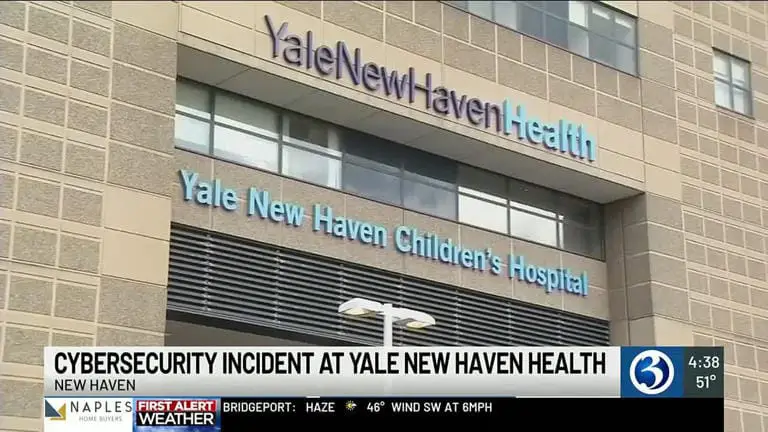Educational Institutions Under Siege: New Haven Phishing Attack Highlights Growing Cybersecurity Crisis

Executive Summary
A sophisticated phishing campaign has struck New Haven Public Schools, with attackers compromising at least four student accounts to distribute over 10,000 fraudulent emails seeking personal banking information. More than half of the student body received these malicious emails, and approximately 1,000 students—representing 10% of the population—opened them. This incident represents just one data point in an alarming trend affecting educational institutions across the United States in late 2025.
The New Haven Attack: Anatomy of a Social Engineering Campaign
Initial Compromise
The attack leveraged compromised student email accounts as the initial vector, allowing threat actors to establish trust and credibility when distributing phishing messages throughout the district. School officials characterized the operation as highly sophisticated, designed specifically to harvest personal banking information from students who might be less experienced in identifying cyber threats.
According to the Department of Consumer Protection, phishing involves messages that impersonate a person or organization, often demanding immediate action and threatening false consequences if not completed. In this case, attackers exploited the inherent trust students place in communications appearing to come from their peers.
Scale and Impact
The numbers paint a concerning picture of the attack's reach:
- 10,000+ phishing emails distributed across the school system
- 50%+ of students received at least one fraudulent message
- ~1,000 students (10% of the student body) opened the emails
- Unknown number of students submitted personal information through fraudulent forms
District officials confirmed receiving reports that some students filled out the fraudulent forms, placing those students and their families at immediate financial risk.
Response and Remediation
New Haven Mayor Justin Elicker confirmed that emails have been wiped from the system and the school is no longer under active threat from the attack. However, Mayor Elicker acknowledged that while city employees undergo phishing scam training, there isn't robust training for students, which is "something that we should be working more on".
The district's IT department has implemented several response measures:
- Forced password resets for affected student accounts
- Email scrubbing to remove malicious messages from inboxes
- Enhanced monitoring and security protocols
- Outreach to affected families with guidance on protecting financial accounts
Cybersecurity expert Tim Weber from Cyber 74 noted that attacks on school systems are unusual but effective, explaining that "if they can go after 10,000-plus students in one fell swoop, they only need a small percentage of those people to put in their information and they could potentially get some type of financial benefit".
Part of a Larger Pattern: Universities Under Attack
The New Haven incident doesn't exist in isolation. Educational institutions across the United States have faced an unprecedented wave of cyberattacks throughout 2025, with several high-profile breaches occurring within weeks of the New Haven attack.
Princeton University Data Breach (November 10, 2025)
Princeton University disclosed a data breach on November 10, 2025, where threat actors breached the institution's systems by targeting a University employee in a phone phishing attack. The attackers compromised a database containing information about alumni, donors, students, and other community members, exposing biographical information including names, email addresses, telephone numbers, and home and business addresses.
The breach occurred through a phone phishing incident that targeted a school employee with ordinary access to the Advancement database. Princeton's response was swift—the institution discovered the breach and successfully removed the attackers from its systems within 24 hours of the initial compromise.
Notably, the compromised database did not contain Social Security numbers, passwords, or financial information such as credit card or bank account numbers, limiting the potential for immediate identity theft. However, cybercriminals could use even this "basic" data to launch destructive attacks by creating convincing phishing emails that trick victims into sharing login credentials or making fraudulent payments.
University of Pennsylvania Breach (October 31, 2025)
Perhaps the most serious recent breach occurred at the University of Pennsylvania, where hackers used a Penn Graduate School of Education email system on October 31, 2025, to send mass emails to students, alumni, staff, and faculty, accusing the school of poor security.
The attackers claimed they breached Penn's systems on October 30 and completed data downloads by October 31, when the compromised employee account was locked. The group claimed they gained full access to a University employee's PennKey account and exported data on 1.2 million University of Pennsylvania students, alumni, and donors from University databases.
Systems accessed included Penn's Customer Relationship Management system (Salesforce), file repositories (SharePoint and Box), a reporting application (Qlikview), and Marketing Cloud. The breach occurred due to a sophisticated identity impersonation commonly known as social engineering, where Penn's staff rapidly locked down the systems and prevented further unauthorized access, but not before an offensive and fraudulent email was sent to the community and information was taken.
The attackers published a 1.7-GB archive containing spreadsheets, donation materials, and other files allegedly taken from Penn's SharePoint and Box systems, and stated the data would be "kept private for our own use for a short period of time, but will be released publicly within the next 1-2 months after our group has used it".
The "Payroll Pirate" Campaign
Beyond these individual incidents, Microsoft Threat Intelligence identified a financially motivated threat actor tracked as Storm-2657 compromising employee accounts to gain unauthorized access to employee profiles and divert salary payments to attacker-controlled accounts in campaigns dubbed "payroll pirate".
Since March 2025, Microsoft observed 11 successfully compromised accounts at three universities that were used to send phishing emails to nearly 6,000 email accounts across 25 universities. The attacks specifically targeted Workday profiles, though any SaaS systems storing HR or payment and bank account information could be targeted with the same technique.
The threat actors employed multiple sophisticated tactics:
- Illness/Outbreak Theme: Messages about illnesses or outbreaks on campus, suggesting recipients might have been exposed, with emails including links to Google Docs pages that redirected to attacker-controlled domains
- Misconduct Reports: Reports of misconduct or actions by individuals within the faculty, tricking recipients into checking links to determine if they were mentioned in the report
- University Impersonation: Phishing emails impersonating legitimate universities or entities associated with universities
Why Educational Institutions Are Prime Targets
The concentration of attacks on educational institutions isn't coincidental. Several factors make schools and universities particularly attractive targets for cybercriminals:
1. Large Attack Surface
The majority of the attack surface for universities and colleges is comprised of web-facing assets such as domains and sub-domains linking to sensitive internal resources. Research reveals the scale of this challenge:
- The top 1,500 universities in the U.S. have an average of 244 domains
- The top 500 universities have an average of 616 domains
- The top 100 universities have an average of 1,580 domains
2. Decentralized Systems
Colleges and universities usually have decentralized systems because it makes sense for different departments to have distinct systems based on distinct needs, but decentralized systems often result in piecemeal setups with clear vulnerabilities.
3. Resource Constraints
There is a severe shortage of qualified cybersecurity professionals, which will last for the foreseeable future, and most colleges and universities are stretched thin without much spare time to implement security protocols.
4. Valuable Data
Educational institutions house multiple types of valuable data:
- Personal identifying information for students, faculty, and staff
- Financial information including banking details and donation records
- Sensitive research data and intellectual property
- Alumni networks with established trust relationships
5. Culture of Openness
The relative ease of obtaining a legitimate email address is why 90 percent of academic breaches begin with an email attack. Academic environments traditionally prioritize accessibility and open communication, which can conflict with security best practices.
The AI-Enhanced Threat Landscape
AI-generated phishing accelerated in 2025, with 40% of Business Email Compromise emails in Q2 confirmed as AI-generated by multiple AI text detection tools. The use of AI has improved the sophistication of phishing and BEC messages, reducing grammatical and structural cues that traditionally signaled fraud.
Cyber attackers are using AI to craft convincing phishing emails, create deepfakes to impersonate educators, and manipulate AI-based chatbots to distribute malware or harvest data. This technological advancement makes it increasingly difficult for even security-conscious individuals to identify malicious communications.
Statistical Context: The Broader Phishing Epidemic
Recent statistics underscore the severity of the phishing threat:
- Phishing was the most reported cybercrime in 2024, with 193,407 complaints representing 22.5% of all internet crimes and $70 million in losses
- Phishing losses quadrupled compared with 2023
- Phishing attacks increased 13% year over year and remained the most common initial attack vector in 2024
- The education sector experienced a 75% year-over-year increase in cyberattacks in 2024
Beginning in August 2024, Mandiant observed a notable increase in phishing attacks targeting the education industry, specifically U.S.-based universities, with a long-term campaign spanning from at least October 2022 targeting thousands of educational institution users per month.
Lessons and Recommendations
For Educational Institutions
- Implement Comprehensive Training: The New Haven incident highlights the critical need for cybersecurity awareness training for students, not just staff. Training should help students recognize and correctly respond to phishing attacks.
- Enforce Multi-Factor Authentication: In multiple instances, compromised accounts did not have MFA enabled, and in other cases, users were tricked into disclosing MFA codes via AiTM phishing links distributed through email. Phishing-resistant MFA should be mandatory without exceptions.
- Reduce Attack Surface: Attack surface reduction is critical, as larger footprints tend to increase the likelihood of data breach vectors like open RDP ports.
- Centralize Security Management: While departmental autonomy has value, security policies and monitoring should be centralized to prevent the "piecemeal setups with clear vulnerabilities" that decentralized systems create.
- Conduct Regular Security Assessments: Proactive vulnerability detection and security ratings can help identify threats such as product misconfigurations, open ports, and unmaintained websites before attackers exploit them.
For Students and Staff
- Verify Before Trusting: Even messages from known contacts should be verified through alternate channels if they contain unusual requests or links.
- Be Skeptical of Urgency: Phishing attacks often create artificial urgency. Take time to verify the legitimacy of requests for personal or financial information.
- Never Share Financial Information via Email: Legitimate institutions will never request banking information, passwords, or Social Security numbers through unsolicited emails or messages.
- Monitor Accounts: Regular monitoring of financial accounts and credit reports can help detect compromise early.
- Report Suspicious Activity: A quick message to the appropriate security team can relieve concerns or potentially stop an active threat.
The Path Forward
The New Haven attack and concurrent breaches at Princeton and Penn demonstrate that educational institutions face sophisticated, persistent threats from well-resourced adversaries. These attacks will likely continue to evolve, leveraging AI and increasingly sophisticated social engineering techniques.
According to the Zscaler ThreatLabz 2024 Ransomware Report, educational institutions face mounting pressure as the fourth-most affected sector by ransomware, with attacks marking a year-over-year increase of more than 35%. The financial stakes are enormous, with institutions facing not only potential ransom payments but also significant costs associated with data recovery efforts, system restoration, legal consequences, and reputational damage.
The cybersecurity challenges facing educational institutions require sustained investment in technology, training, and personnel. As Mayor Elicker noted regarding New Haven's response, robust security training that extends to the entire school community—not just employees—is essential for building organizational resilience against these evolving threats.
Conclusion
The November 20, 2025, phishing attack on New Haven Public Schools serves as both a warning and a call to action. When combined with the major breaches at Princeton and Penn, along with the ongoing "payroll pirate" campaigns, a clear pattern emerges: educational institutions are under sustained assault from cybercriminals who recognize their unique vulnerabilities and valuable data assets.
Success in this environment requires more than technical controls. It demands a cultural shift that prioritizes security awareness at every level, from elementary students learning to recognize suspicious emails to university administrators implementing phishing-resistant authentication systems. Only through comprehensive, sustained efforts can educational institutions hope to protect their communities from the growing wave of cyber threats.
Additional Resources
- New Haven Public Schools IT Department: Contact for any students or families who may have been affected
- Federal Trade Commission: Identity theft resources at identitytheft.gov
- FBI Internet Crime Complaint Center: Report cybercrime at ic3.gov
- CISA Cybersecurity Awareness: Training materials and resources at cisa.gov
References
All information in this article has been sourced from publicly available news reports and cybersecurity research published between October and November 2025, including coverage from Hartford Courant, WFSB, Fox61, WTNH, NBC Connecticut, BleepingComputer, TechCrunch, Microsoft Security Blog, Google Cloud Blog, and various cybersecurity research organizations.





